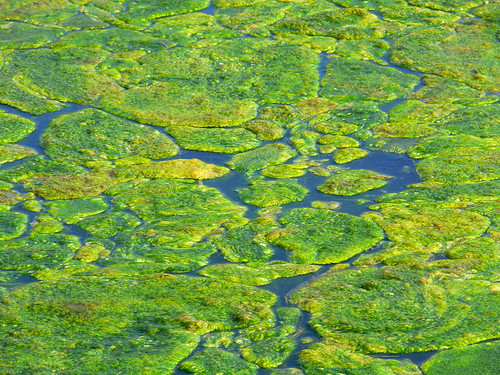 "Welcome to Greener Skies" -- that was the slogan as passengers boarded the first Alaska Airlines test flight from Seattle to Washington D.C and Portland, Oregon.
"Welcome to Greener Skies" -- that was the slogan as passengers boarded the first Alaska Airlines test flight from Seattle to Washington D.C and Portland, Oregon.
Continental Airlines also completed its first biofuel propelled test flight to Chicago.
With more airlines queueing up, the race is on to move to greener technology. These planes were fueled by 80% jet fuel and 20% biofuel produced from algae or cooking oil.
Pond scum to the rescue!
Nearly 75% of our energy needs are derived from non-renewable resources -- fossil fuels such as coal, oil, and natural gas. These are called non-renewable because they were formed from the remains of plants and animals over millions of years, and cannot be replenished in a short period of time.
With rising gas prices and a growing world population that recently reached the 7 billion mark, it is clear we cannot depend on oil and gas forever. There is pressure to find alternate sources of energy -- ones that are renewable and can be sustained for a long time. Enter algae.
Algae are the slimy plants that can be found growing on rocks, still pond water, or even on your bathroom walls! There are nearly 10,000 varieties of algae, from moss beds to kelp leaves that float in the ocean. But not all algae are equal -- pond scum is best suited for biofuel as they contain the most oil.
Green oil
Algae need water, sunlight, and carbon dioxide to grow. In fact, biodiesel manufacturers are building their plants close to factories that produce a lot of carbon dioxide! Not only does this reduce the amount of carbon dioxide released into the atmosphere but there is also a large supply for algae growth.
The cell walls of algae contain oil, which is extracted by pressing them in large machines. The leftover waste can be used as fertilizer, or fodder for livestock. It is said that one acre of algae can produce 100,000 gallons of algae oil!
Corn is another source of biofuel, however, these take up a lot more space to grow compared to the tiny algae which can be grown in indoor tanks. Secondly, corn yields significantly less amount of oil per acre.
Are there challenges?
Yes, of course. Algal biofuel costs six times more than traditional jet fuel.
There are critics who say the amount of carbon dioxide released by biofuel-powered planes is the same as traditional jet-fuel planes. Add to that the cost of manufacturing and transporting the fuel.
After some complex calculations, a Switzerland-based organization estimates that a 20% biofuel mix that is being tested would reduce the overall carbon footprint (amount of carbon released in the atmosphere) by 10%.
However, more research is needed to make biofuels a viable solution. This is a small first step in finding renewable solutions that can actually work.








